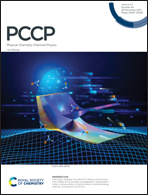Electropumping of nanofluidic water by linear and angular momentum coupling: theoretical foundations and molecular dynamics simulations
Abstract
In this article we review the relatively new phenomenon of electropumping in nanofluidic systems, in which nonzero net flow results when polar molecules are rotated by external electric fields. The flow is a consequence of coupling of the spin angular momentum of molecules with their linear streaming momentum. By devising confining surfaces that are asymmetric – specifically one surface is more hydrophobic compared to the other – unidirectional flow results and so pumping can be achieved without the use of pressure gradients. We first cover the historical background to this phenomenon and follow that with a detailed theoretical description of the governing hydrodynamics. Following that we summarise work that has applied this phenomenon to pump water confined to planar nanochannels, semi-functionalised single carbon nanotubes and concentric carbon nanotubes. We also report on the energy efficiency of this pumping technique by comparisons with traditional flows of planar Couette and Poiseuille flow, with the surprising conclusion that electropumping at the nanoscale is some 4 orders of magnitude more efficient than pumping by Poiseuille flow.

- This article is part of the themed collections: New Perspectives on Molecular Simulation of Chemistry and Physics in External Electric Fields and PCCP Perspectives


 Please wait while we load your content...
Please wait while we load your content...